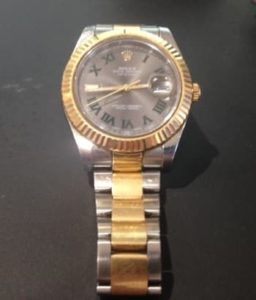Is Jewelry Properly Insured on a Homeowners Insurance Policy?
MAKE CERTAIN YOUR JEWELRY IS PROPERLY INSURED

Many people overlook the need to properly insure their expensive jewelry, believing that it is automatically covered by their homeowners’ insurance policy. While homeowner’s insurance policies do cover jewelry, this insurance usually is subject to a much lower limit than the overall contents coverage. This reduced limit is called a “sub-limit,” and a typical sub-limit is $1,500 for loss by theft of jewelry, watches, and precious and semiprecious stones.
And what happens if one day you notice that your $1,000 necklace is missing, but do not know how it went missing? This is called mysterious disappearance and is usually not covered by a standard homeowners’ insurance policy.
If your jewelry is worth more than the sub-limit in your homeowner’s policy, you should consider purchasing specific insurance to cover it. The following is a good process to follow.
1. Arrange an appointment with you insurance agent to review your jewelry coverage. Bring as much information about your jewelry portfolio as possible, including any appraisals.
2. If your high-valued jewelry has not been appraised within the last 3 years, consider obtaining an appraisal from a reputable jeweler. Insurance companies often require an appraisal on more expensive jewelry from a graduate of the Gemological Institute of America (GIA). The Institute’s G.G., G.J., or A.J.P. designations at the end of an individual’s name indicate that the jeweler has achieved a high level of professionalism with an education backed by a respected nonprofit organization.
3. Make sure the appraisal has a description of the diamond’s four C’s — (a) carat, (b) cut, (c) clarity, and (d) color. The “carat” refers to the weight of the diamond. The quality of the “cut” of the diamond results from the way light enters the stone and is reflected back. “Cut” is also used to refer to the diamond’s shape, such as round or pear-shaped. The “clarity” refers to the prevalence of minor spots, lines, bubbles, or other natural imperfections within the diamond. The “color” denotes the tint a diamond may possess. Remember that the better the appraisal, the fewer problems you will encounter with the insurer if you ever have to make a claim.
4. Purchase inland marine coverage that can be added either via an endorsement onto your homeowners policy or via a separate policy specifically written to insure the jewelry. This endorsement (or separate policy) provides much broader coverage than the limited protection found on the un-endorsed homeowners’ policy. There are times when we will recommend getting a standalone policy. There are benefits, such as it will not be escrowed for and therefore not affect your mortgage payment when you have to add more to the policy. And, in the tragic event that you have to file a claim for loss or destruction of a piece of jewelry, your homeowners’ policy will not be affected at all. Visit our Jewelry Insurance page for more details.
5. Consider keeping any valuable jewelry you rarely wear in a safety deposit box at your bank.
6. Review your jewelry protection with us at least every 2 years or whenever you sell or purchase high-value jewelry.
One thing to keep in mind is that the time to add the jewelry to your policy (or schedule it) is when you buy the piece of jewelry, not when you give it to the recipient if it is a gift. A lot of folks buy jewelry as a gift and have it hidden for days or weeks pending the day when they will give it as a gift. And the time they think about adding it to the policy is the time they give the gift. So if that piece of jewelry gets lost, stolen or destroyed before it is scheduled, then it is subject to the sub-limits and deductibles on the homeowners’ insurance policy.
Huff Insurance is a full service Independent Insurance Agent We have been dedicated to Protecting Lifestyles™ since 1960. We offer a full array of Personal Insurance, Commercial Insurance and Life Insurance & Health Insurance products. Call us at 410-647-111

